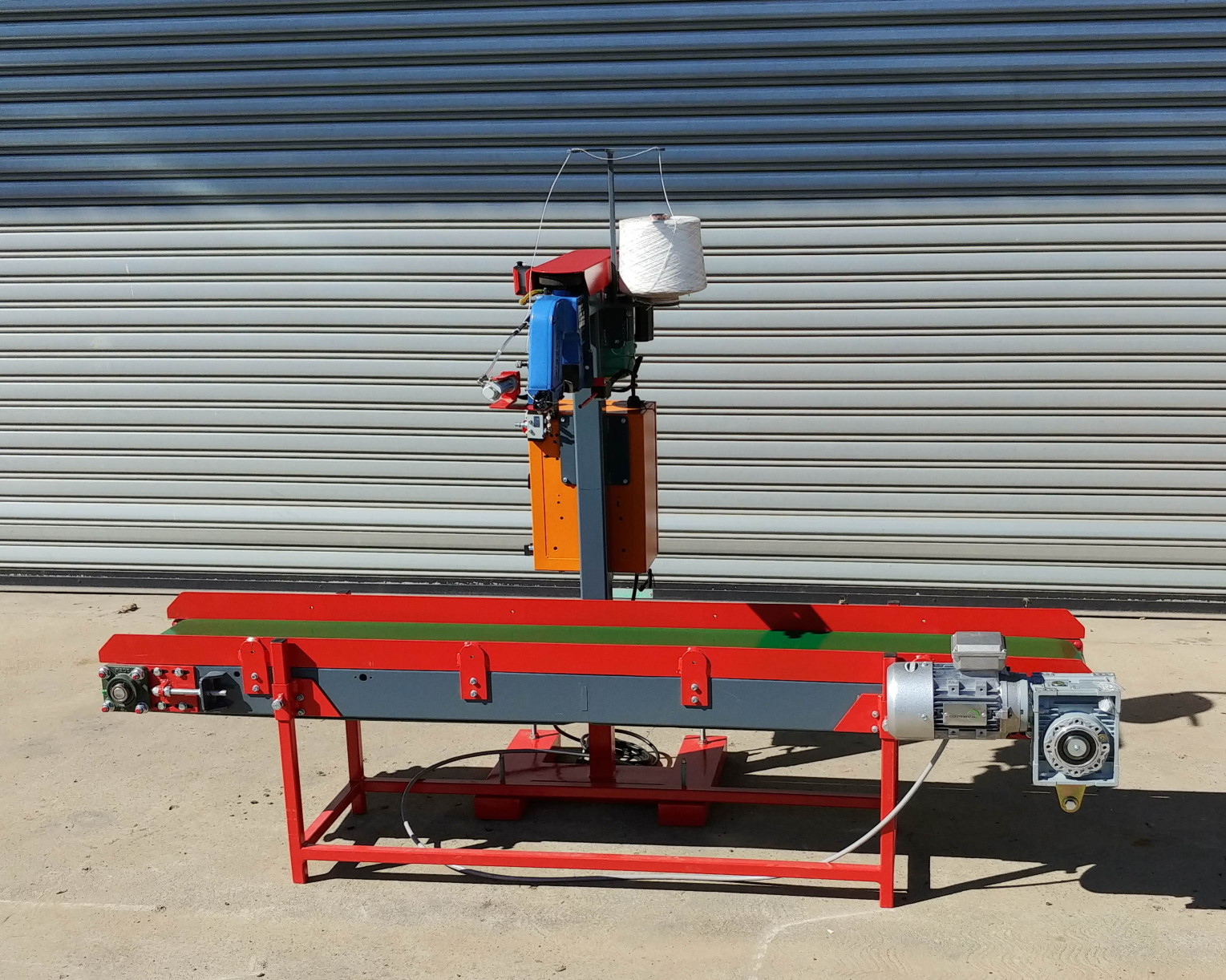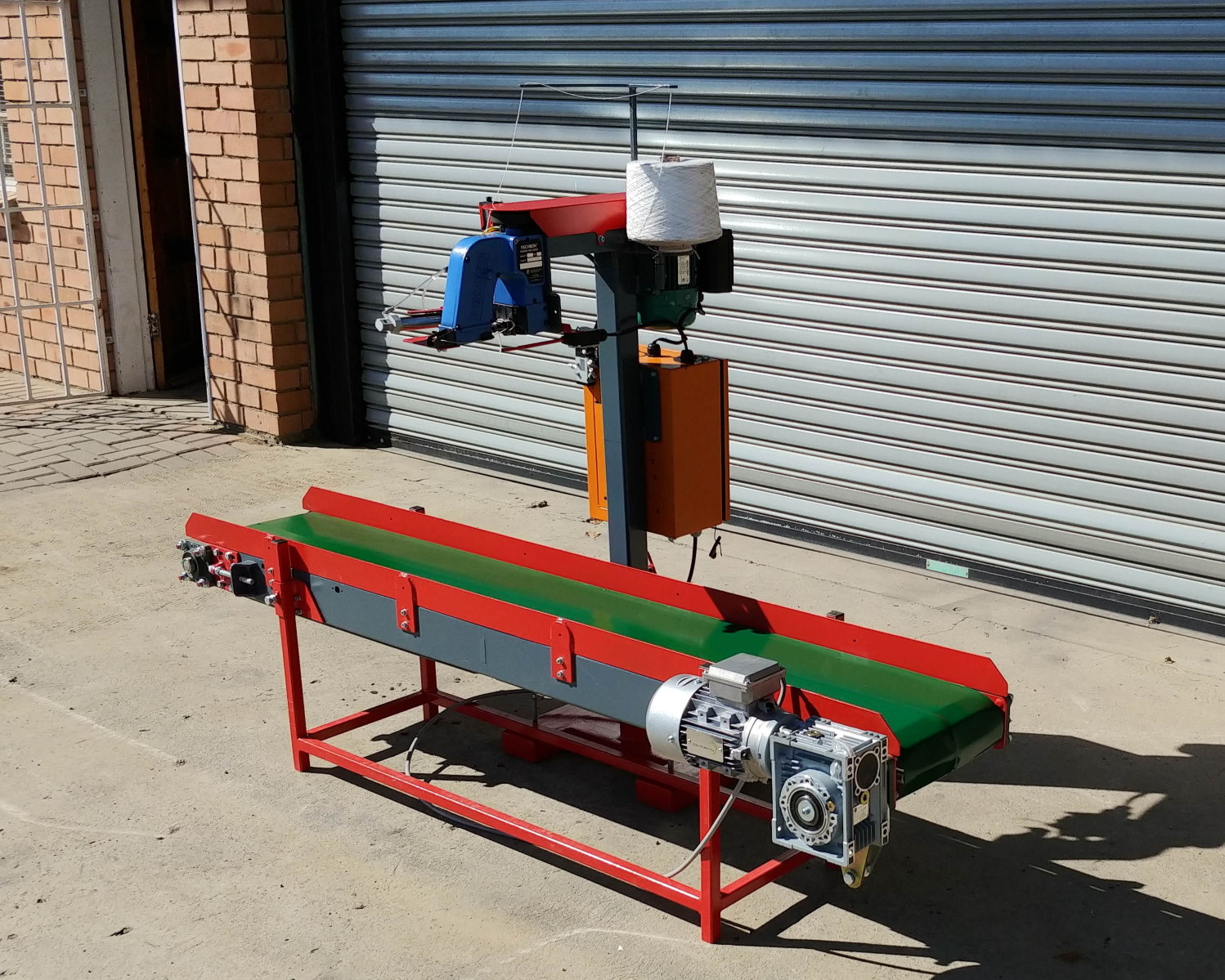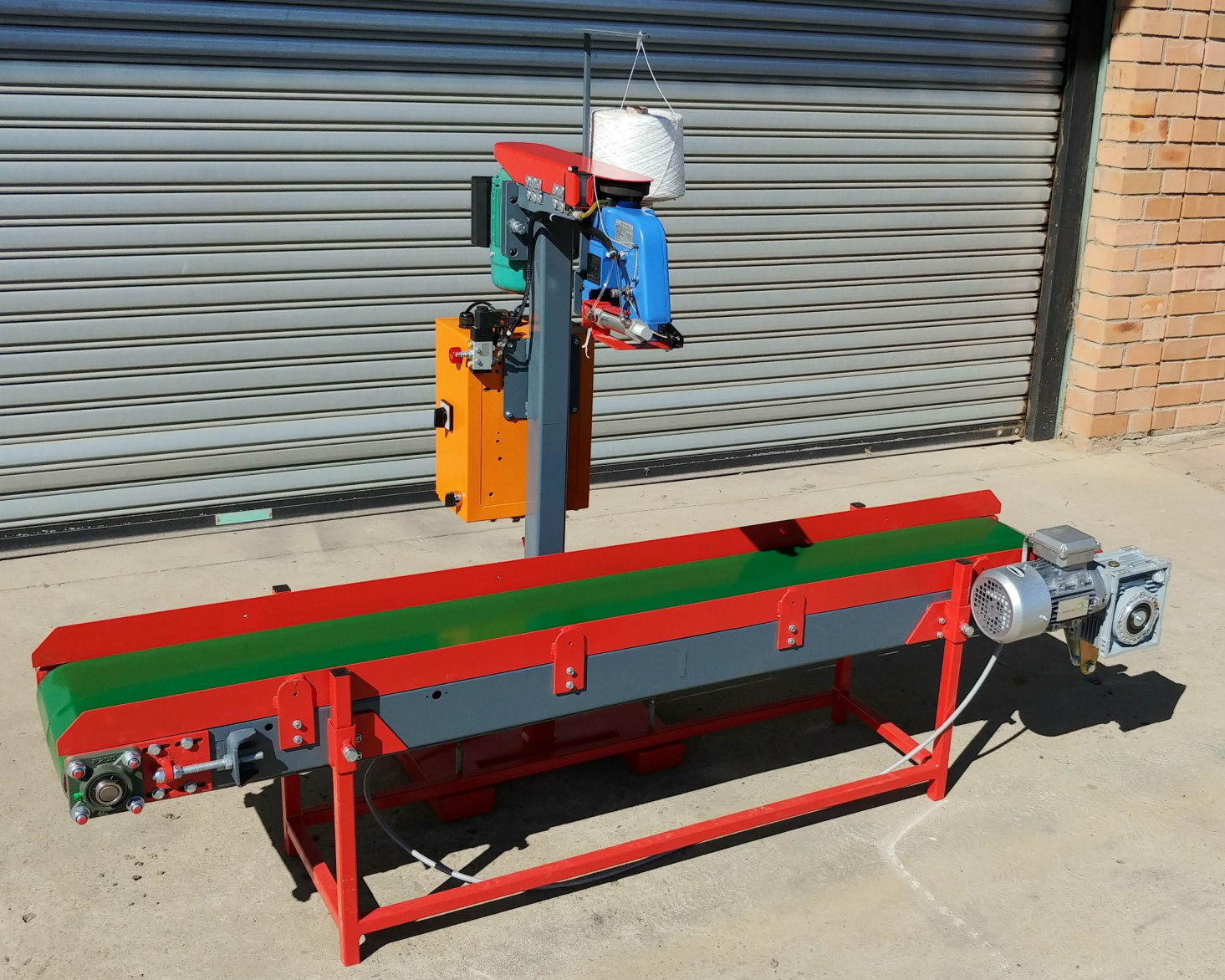Products
-
10 bag/min
-
1.1 kW 230 Volt
-
2500Lx800Hx350W
-
80kg
-
Electronic control
What is a Bag Sewing System?
It is an industrial sewing machine used to close bags and is sometimes also called a closer sewing machine, too. This industrial bagging system forms an integral part of many production processes.
Closing bags automatically reduces leakage and spillage. It speeds up the entire process and ensures uniformity. The result is an excellent finished product.
If you need a closer sewing machine in South Africa, you have come to the right place.
Why Choose a Bag Sewing System for Your Business?
Invest in our innovative bagging systems for your bag closing needs. Bagging systems save businesses many hours of trouble. Cost-effective systems save money by reducing staff. Employing skilled workers could put a strain on your bank balance.
The compact design uses heavy duty sewing thread to close a wide range of filled bags. The heavy-duty sewing head fill poly bags, plastic bags, and paper bags. They also fill other open mouth style bags, such as poly woven and BOPP bags.
Industrial bag sewing equipment is easy to use. The system requires plain stitching using a trouble-free operation. Many industries enjoy bag stitching equipment. Sewing systems close bags filled with different products. These include products like corn, nuts, rice, and feed.
Automated bag filling is a cost-effective method of closing bags. Hand-held bag closing equipment can fill up to 8 bags a minute. We often incorporate complete sewing setups into other larger packaging systems. Some of these include automatic bag placers, bag top reformers and open mouth baggers.
What Are the Benefits of a Bag Sewing System?
You don't need to hire an entire team to help close bags or run the closing process. All it takes is one individual to operate our easy automatic sewing system. Stitching bags with our closer machine ensures an attractive finish and no spillage.
- Close any style of open-mouth bags using our easy bags sewing machine.
- We have designed our easy conveyor belt system for stitching bags for a wide range of products. The result is quality bag sewing.
- Bags are sturdy and won't spill or leak when using chain stitch or straight stitch. This depends on what goes into the bags.
- Bagging machines are a cost-effective method of filling bags. You can cut company costs by reducing the dependence on skilled workers and increasing productivity.
- The full automation and a high-precision systems are easy to use.
Bag Sewing vs Bag Sealing
There are many types of bag sewing systems available on the market.
Here are the 3 main types of systems:
- Tape
- Plain
- Fold-Over Machines
How Does a Bag Sewing System Work?
It only takes one individual to feed a bag into a plain sewing machine. Bagging systems are simple, and they require little skill. They are not very demanding sewing jobs.
Once you feed the bag into one of our automatic bagging machines, sewing starts automatically. When the system cuts the threat, you've completed the task.
Tape bag sealers working similarly to plain sewing bag sealers. The difference between the two is that the system feeds a tape during sewing to reinforce the seal. A fold-over sewing bag system folds the top of the bag over. It then stitches the seam down.
Certain machines use a single stitch, yet others use double or chain stitches. Common uses for fold-over bags include peanuts and dog food. It also includes bird seed and similar fine materials.
Where Do I Get a Bag Sewing Machine?
The type of bagging system you use wholly depends on automation you choose to use for your products. And it depends on what type of products you are bagging and sealing. At Flo-Scan, we sell a wide range of machines for different applications.
Source your automated system from us for complete screening and packaging tasks. We supply machinery for various industrial sectors. Let us assist with configuring entire systems to accommodate you. No factory or manufacturing plant is too big or too small for us to tackle.


